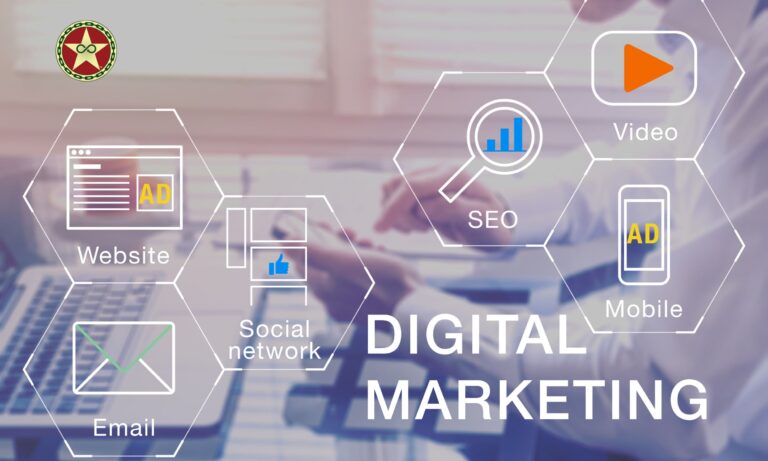A very strategic and considered plan is necessary for content marketing. It has to be laser-focused on creating the best possible interaction and engagement opportunities for a very clear and defined audience. It is not a tool just to get traffic to a site. It is a way to build a brand and an online business that is hard to imitate. You do that by being you. That is the big hook you hang your content on. Beyond the personality of an online brand, there is, of course, the trust factor. Any business that a customer is going to do with an online brand requires the customer to trust that brand.
Getting to know and properly interpreting the audience is crucial for effective communication. In communication courses, one of the most fundamental tools taught is how to determine the audience for the communication. The essential question asked is, “Who is going to be on the other end of this?”
Negotiating any writing project, and certainly those that need research first, really does depend on audience. If a client or your direct supervisor can’t be reached to ask a question, he or she is still somewhere in the mix of potential readers or listeners. “I’ll know it when I see it” is an unfortunate response that can be rendered moot by an audience not understanding what they’ve viewed or read.
To build a successful content marketing strategy, you first need to know who you’re creating that content for. I’m not just talking about surface-level demographic stuff like “What age range are we going after?” or “What’s our ideal customer’s job title?” Although those details certainly help, a true understanding of your audience goes much deeper. You have to get into their heads a little and think about what makes them tick. What are they interested in? What are their pain points? And, most importantly, how do they like to consume the information they need to solve their problems and/or make their lives better?
What’s important is that the goals we set be clear. This is vital for two reasons. First, if I am not clear about what my goal is, I’ll have a much harder time finding the motivation to reach it. Second, and just as important, unless my supervisors and the faculty members around me know what my goals are, they have no way of helping me when I need it most. Clear goals unify the work environment, giving everyone who works with me the same sense of what we’re all here to achieve and—crucially—a clear sense of my role in achieving those outcomes.
It is extremely important to have distinct and measurable objectives for your content marketing. These goals ought to be consistent with your overall business strategy and point to the main things that are supposed to come out of your content marketing. Unless you are clear on why you are doing what you are doing and what it’s supposed to accomplish, you might as well save your time and money. Yet, more often than not, content marketers lack that fundamental clarity that enables effective strategy and tactics. And when content marketers lack clarity, that means content marketers lack direction — and who can successfully plot a course when you don’t know where you’re going?
How to Develop a Content Strategy
Think about what sort of content will best engage your target audience. You should have a good idea of what they are already consuming. If you can determine that, try and find a way to get your content in front of them—without interrupting what they are already enjoying. We’ve found that, too often, companies create content that appeals to them but not necessarily to the audience they are trying to attract. Instead, try and find an angle or story that will hook your target audience. For good ideas, look at what your competitors are already doing (and then try to do better).
Creating Content with Quality
or
The Creation of Quality Content
Content of the highest quality is what counts. Direct, easy-to-read, informative content should be the core of your web presence. Although many forms of digital content can deliver a potent message, there is still something about the written word that carries weight for the human reader. Follow the lead of well-established print editorial guidelines, as they now apply to web writing. And most importantly, don’t lead your readers astray. Content and context are the driving forces behind effective web-based apercus (or, as they’re sometimes known, “teachable moments”).
Spreading Out and Advertising
Crafting excellent content is just the first step toward success. You also need a plan for getting that content in front of the right people and making them care about it. Use a variety of platforms to do this, including your own website, where you can bundle related pieces together (as I do here in my blog) and tag them for better findability; invite engagement by posting good discussion prompts alongside your content; and making it easy to share or save the content for later. You could also use platforms like Medium, which can offer built-in audiences and a handy interface for weaving long-form pieces together with related content from other creators into “publications,” like virtual magazines. Finally, you might consider trying out paid ads on social media channels; on search engines, where you can target precise keywords and key phrases that your target customers are likely to enter; or on “native” advertising platforms, where your content can get served up as if it were a news story or an article in a lifestyle magazine.
Search engine optimization (SEO) is a crucial part of online marketing. When done right, SEO can push your website ahead of the competition and ensure it is seen by the right people. One of the essential elements of SEO is using the right keywords. Keywords are the terms that people enter into a search engine when they are looking for something. By identifying and using the keywords that are most relevant to your business, you can increase the visibility of your website and attract more of the right kind of traffic.
To enhance the chances of your content being seen by the typical internet user, pay attention to search engine optimization (SEO). This is the first bit of advice many people will give you, and for good reason: It works. The term “search engine optimization” refers to the activities you undertake to “optimize” your website so that it performs well in search engine results pages. In this section, we’ll cover three key components of good SEO: keyword research, on-page optimization, and link building.
Being engaged in a task is often seen as a desirable quality of human activity. It is the opposite of passive sit-down-and-observe. When one is engaged, one is involved, participating, and taking part in something meaningful and important. It is a bad sign (in most cases) if someone is disengaged, not interested, not involved, or not taking part in whatever is happening around them. Interaction is also often seen as a positive thing. When one interacts, particularly in a way that involves and includes others (as opposed to just talking at them), good things tend to happen.
It is imperative to get involved with your audience and work to make it a two-way relationship. To do this put out content that is engaging, get comments and shares on that content, and most importantly, get direct feedback and conversations going. In our digital era, direct and personalized conversation can be tough, but maintaining these relationships can also be quite essential.
Most of the brands we have direct relationships with are ones that, at one point or another, made us feel valued as an audience. Remembering and valuing your audience will go a long way toward keeping them with you and working to make your customer base grow.
Evaluating and Interpreting Data
It is critical to appraise the functionality of content marketing continually. It must be gauged using the most suitable set of analytic tools. These tools help one to measure what we call “key performance indicators,” or KPIs. Various KPIs can be used to understand whether the content marketing campaign is succeeding or failing, and also to understand why. For instance, one might look at KPIs like website traffic, lead generation, or conversion rates to see how well the content is doing its job. If you use these KPIs, you will see a clear trend for better or worse—which will help you make smart decisions.
Adjusting and changing with the times is the true sign of a leader. Coca-Cola has been in the business for over 125 years, but they haven’t always dressed to the nines. Just like how Snoop Dogg had his short-lived transformation to Snoop Lion before changing his name back, Coca-Cola had its own identity crisis. And in the “70s, they went full-on disco. Capri pants, combs in back pockets, and platform shoes—Coca-Cola had it all. But there’s something to be said for a company that can change, change fast, and still come out on top with their integrity intact.
The thing is that you must keep up with current industry trends, as well as the preferences of your audience and the new technologies that are emerging. These are ever-changing factors, and, so too should be your content. Some experiment with formats and mediums (think Instagram Stories or podcasts), some try out content strategies (think ‘throw it at the wall and see what sticks’), and others take what may seem like a more formulaic approach. But it’s a mistake to think there’s just one right way to “do” content. Any content marketer who is worth their salt will tell you that they’re continually evolving and perfecting their approach—if they’re not, well, then you’re doing it wrong.
In summary, this study was conducted to determine if significant reductions in fume levels could be achieved if employees were given more workspaces and if these spaces were made open and unobstructed. In addition, the project considered if turning off workspaces for evaporation would reduce fume levels sufficiently enough to allow additional workspaces to be added. The research hypothesis was that addition of workspace, combined with turning off workspaces for evaporation, would reduce the fume levels sufficiently enough to allow safe addition of workspaces. The safety of this addition is a concern since workspaces can bring employees closer together and, therefore, closer to fumes they would not otherwise inhale.
Attracting and engaging the audience you desire requires a potent strategy. And content marketing offers exactly that.
This strategic approach wins over prospects and clients not by overt pitching or relentless promos but, rather, with clear and consistent messaging that subtly elicits trust and establishes a bond. It emerges from cultivating a deep understanding of your target audience and moves on to setting sensible goals and creating top-quality, truly relevant content.
Once this content is expressed, it must be effectively distributed and promoted. And all of this must be done with solid metrics in place so that the result can be rightly judged and the necessary adjustments made.
“Commitment” is the keyword. If you’re engaged in this kind of campaign, you must be all in—and for the long term.



